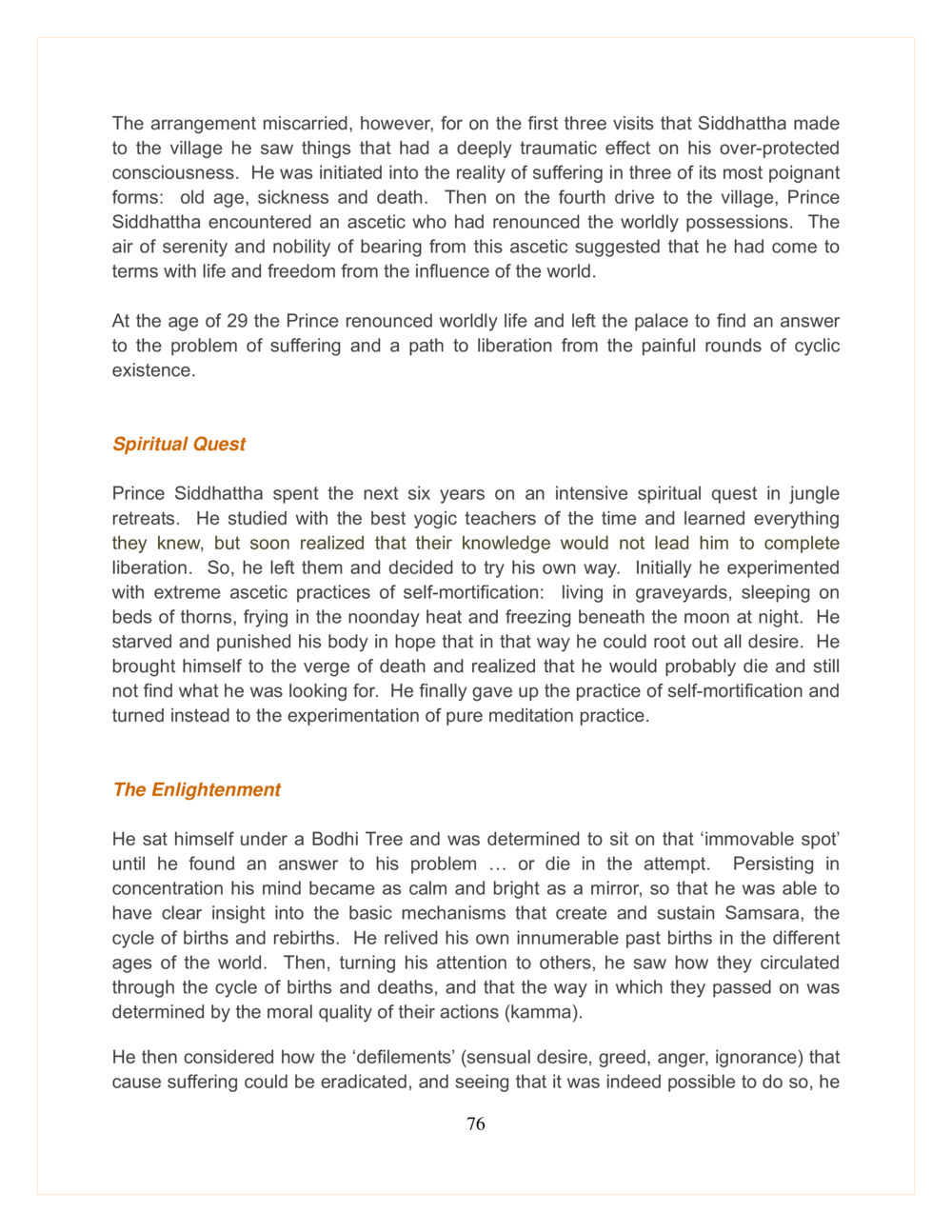The Journey of Siddhartha: From Suffering to Enlightenment : หน้า 76/115
DMC Translor’s handbook : หน้า 76/115 Explore Prince Siddhartha's transformative journey from confronting suffering to achieving enlightenment under the Bodhi Tree.
1 ครั้ง

สรุปเนื้อหา
This text traces the transformative journey of Prince Siddhartha in his quest for understanding suffering and achieving enlightenment. Over the course of several visits to the village, he encounters the harsh realities of life: old age, sickness, and death, which deeply affect his sheltered existence. At 29, he renounces his royal privileges to seek answers, embarking on a rigorous spiritual quest. Siddhartha experiments with various ascetic practices, pushing his body to the brink of death, yet realizes these methods do not lead to liberation. Ultimately, he chooses to meditate under the Bodhi Tree, determined to find truth or die trying. Through intense concentration, he achieves profound insights into the cycle of Samsara and the nature of suffering, leading him toward his eventual enlightenment.
หัวข้อประเด็น
-Siddhartha's encounters with suffering
-Siddhartha's spiritual journey
-Practices of self-mortification
-The significance of the Bodhi Tree
-Understanding the cycle of Samsara



















































































































